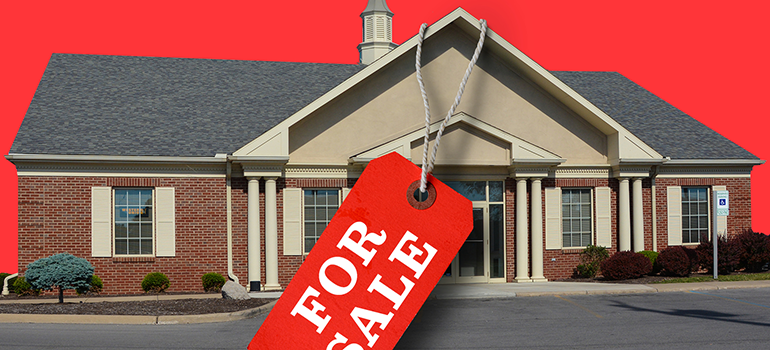
Fewer Small Banks Are Selling, but Why?
 With just under $2 billion in assets, Penn Community Bank, a mutual savings institution in Doylestown, Pennsylvania, wasn’t necessarily looking for a new acquisition target. As a mutual bank, its directors choose opportunities “very selectively,” says its President and CEO Jeane Coyle.
With just under $2 billion in assets, Penn Community Bank, a mutual savings institution in Doylestown, Pennsylvania, wasn’t necessarily looking for a new acquisition target. As a mutual bank, its directors choose opportunities “very selectively,” says its President and CEO Jeane Coyle.
But early this year, W. Russell Koerwer, CEO of Chelten Hills Savings Bank, located in nearby Montgomery County, approached Coyle with an idea. He wanted to merge the two entities so he could retire. With one office, the Chelten Hills assets just surpass $27 million. While many banks would shy away from starting the complicated merger process of such a small entity, Coyle and her directors didn’t see it that way. “We didn’t have any branch overlap,” says Coyle. And Penn Community liked the idea of stepping into another county surrounding the Philadelphia area. It made the decision easy.
After the typical due diligence, the two sides agreed to a merger in June, making it an example of a slowing trend. According to data compiled by S&P Global Market Intelligence, the number of acquisitions where a bank with less than $1 billion in assets is the target dropped 17 percent last year from a post-recession peak of 253 in 2015. Through the first half of 2017, that number has dropped to a total of 98. At the same time, the proportion of M&A deals involving small banks has fallen from around 90 percent to 82 percent. Suddenly, the small bank has become far less attractive to buyers, but why?
Before understanding what has hurt small bank deals so far in 2017, there’s a need to first investigate what happened a few years ago. Community banks, or banks under $1 billion in assets deeply tied to their local geographies, saw similar issues as bigger banks heading into the last recession. Underwriting standards weakened, the size of real estate portfolios increased, and banks didn’t have enough to cover the losses when everything crumbled. The troubles were still winding through balance sheets when 92 banks failed in 2011. That left many unattractive assets on the market and fewer buyers available. The market started to turn around in 2012, when credit metrics improved and community banks began selling outside the purview of the Federal Deposit Insurance Corp.’s failed bank process. As institutions recovered, community bank M&A activity jumped 27 percent from 2012 to 2015, according to S&P Global Market Intelligence.
Also, in 2010, Congress passed the Dodd-Frank Act, the single largest piece of financial reform in decades. A 2016 survey by the Federal Reserve Bank of St. Louis found that compliance expenses have increased at banks since 2010, and that total compliance expenses as a percentage of noninterest expense for very small banks, those with less than $100 million in assets, is triple that of banks from $1 billion to $10 billion in assets. Economies of scale simply improve for larger banks.
“Smaller banks have [fewer] resources available to manage” the compliance issues, says Adam Fiedor, managing director of investment bank GLC Advisors & Co.
Little has changed the regulatory burden, despite many of the promises in the presidential campaign and the first 100 days of Congress. It’s unclear if anything will pass, although the House of Representatives has voted to end many of the Dodd-Frank restrictions. But the reform bill will meet strong opposition in the Senate.
In the meantime, banks with $1 billion to $10 billion in assets, the primary buyers of community banks, have looked toward larger entities to grow. Current regulations have rules that kick into place for organizations at the $1 billion level, then another set of regulations trigger at $10 billion. For example, if less than $1 billion, a bank must go through an examination every 18 months. Above $1 billion, it jumps to every 12 months. But when going over $10 billion, stress testing becomes mandatory, and banks lose debit fee income because of the Durbin amendment to the Dodd-Frank Act.
“Banks approaching $10 billion want to leap over instead of creep over, because incremental costs are so significant,” says Karen Thomas, a vice president of government relations and public policy at the Independent Community Bankers of America, which advocates for Dodd-Frank reform. Of the 44 banks that crossed the $10 billion barrier since 2010, all but five did so through an acquisition, according to investment bank Sandler O’Neill + Partners. And 59 percent did so through a large acquisition or through a sale. With midsize banks looking for acquisitions that dramatically grow their assets, small banks aren’t as attractive buyout candidates.
Rising interest rates also play a role. With another interest rate hike this year, the Federal Reserve has indicated that more could be on the horizon. The low interest rate environment negatively impacted net interest margins, which hit a low in the first quarter of 2015, at 2.95 percent for all banks. That has steadily increased since then, sitting at 3.10 percent in the first quarter of 2017, according to the Federal Reserve Bank of St. Louis. With rates rising, community banks saw net income increase 10.1 percent in 2016, compared to a year earlier. This increases the price point of a potential purchase.
Bill Hickey, co-head of investment banking at Sandler O’Neill + Partners, says that the valuation of banks in the buyer universe for community banks has fallen since the inauguration, partly because tax reform hasn’t gained momentum as expected, while community banks’ earnings have suddenly increased. “That creates a little bit of [a] capacity issue,” adds Hickey, since the buyers need a lower price, but community banks see earnings improving, demanding a premium.
For Coyle and her team at Penn Community, merging with Chelten Hills wouldn’t push total assets beyond any regulatory hurdles, and it doesn’t have to worry about the public markets pushing down a valuation. The two sides are awaiting final approval from regulators, but it doesn’t mean that Penn Community won’t continue to seek small banks for growth. It will do so, though, the “old-fashioned way,” says Coyle, only looking for long-term strategic moves.
It’s a lukewarm proposition for small banks looking to quickly sell.

Join OUr Community
Bank Director’s annual Bank Services Membership Program combines Bank Director’s extensive online library of director training materials, conferences, our quarterly publication, and access to FinXTech Connect.
Become a Member
Our commitment to those leaders who believe a strong board makes a strong bank never wavers.


